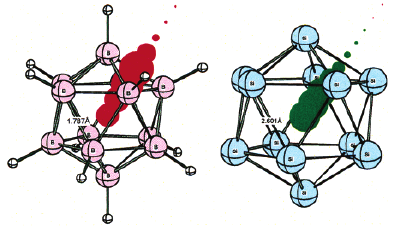-
What governs nitrogen configuration in substituted aminophosphines?
M.D. Wodrich, A. Vargas, , G. Merino and C. Corminboeuf
Journal of Physical Organic Chemistry, 22 (2) (2008), p101-109


DOI:10.1002/poc.1431 | unige:3181 | Abstract | Article PDF
The trigonal planar geometry of the nitrogen atom in commonly used phosphoramidite ligands is not in line with the traditional valence shell electron pair repulsion (VSEPR) model. In this work, the effects governing nitrogen configuration in several substituted aminophosphines, A2PNB2 (A or BĀ =Ā H, F, Cl, Br, Me, OMe, BINOP), are examined using modern computational analytic tools. The electron delocalization descriptions provided by both electron localization function (ELF) and block localized wavefunction analysis support the proposed relationships between conformation and negative hyperconjugative interactions. In the parent H2PNH2, the pyramidal nitrogen configuration results from nitrogen lone pair electron donation into the Ļ* P ā H orbital. While enhanced effects are seen for F2PNMe2, placing highly electronegative fluorine substituents on nitrogen (i.e., Me2PNF2) eliminates delocalization of the nitrogen lone pair. Understanding and quantifying these effects can lead to greater flexibility in designing new catalysts.



